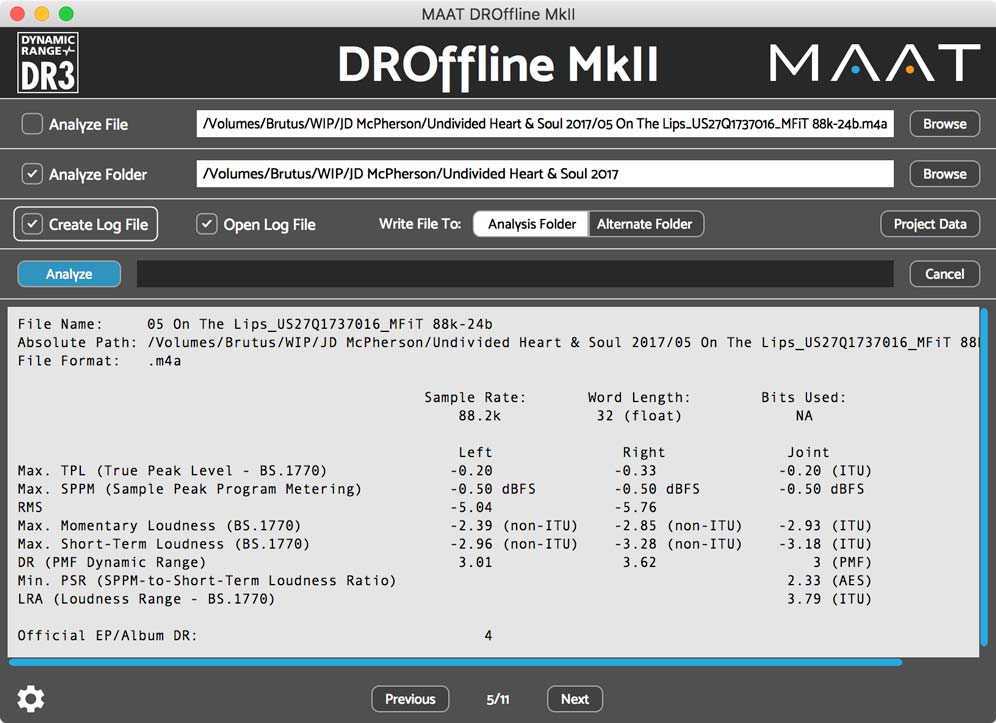Hey folks,
Back in 2015, Scotty posted about “Dynamic Range Analysis Tools” <https://www.audiocircle.com/index.php?topic=135196.msg1436420> in which he mentioned the original DR Dynamic Range line offered by the PMF or Pleasurize Music Foundation. Development of those products have since been handed over from the PMF to MAAT Incorporated and, though the original TT DR Meter and TT DROffline still work with older hosts, time has marched on and so has dynamic range measurement.
Nowadays, we have R128 and A/85 Loudness (normalization) standards in place for much of international broadcast and streaming. Still, for audiophiles and enthusiasts, there’s the same need for dynamic range measurement we had back in the day, especially for file-based playback. This is particularly true when comparing different versions and releases of the “same” album or single.
The original TT DR products were brought into the modern age by MAAT as the DRMeter cross-platform plug–in and, more interesting for you all, DROffline (DRO) which is a native, batch measurement utility. DRO brought support for current versions of macOS and Windows, as well as FLAC and ALAC support plus s.r. support up to 384 kHz. This month, MAAT rev’d DRO to DROffline MkII, which adds R128 metrics and a whole bunch of additional measurements that engineers and you folks would find of interest. DROffline (MkI if you will) is still available…
